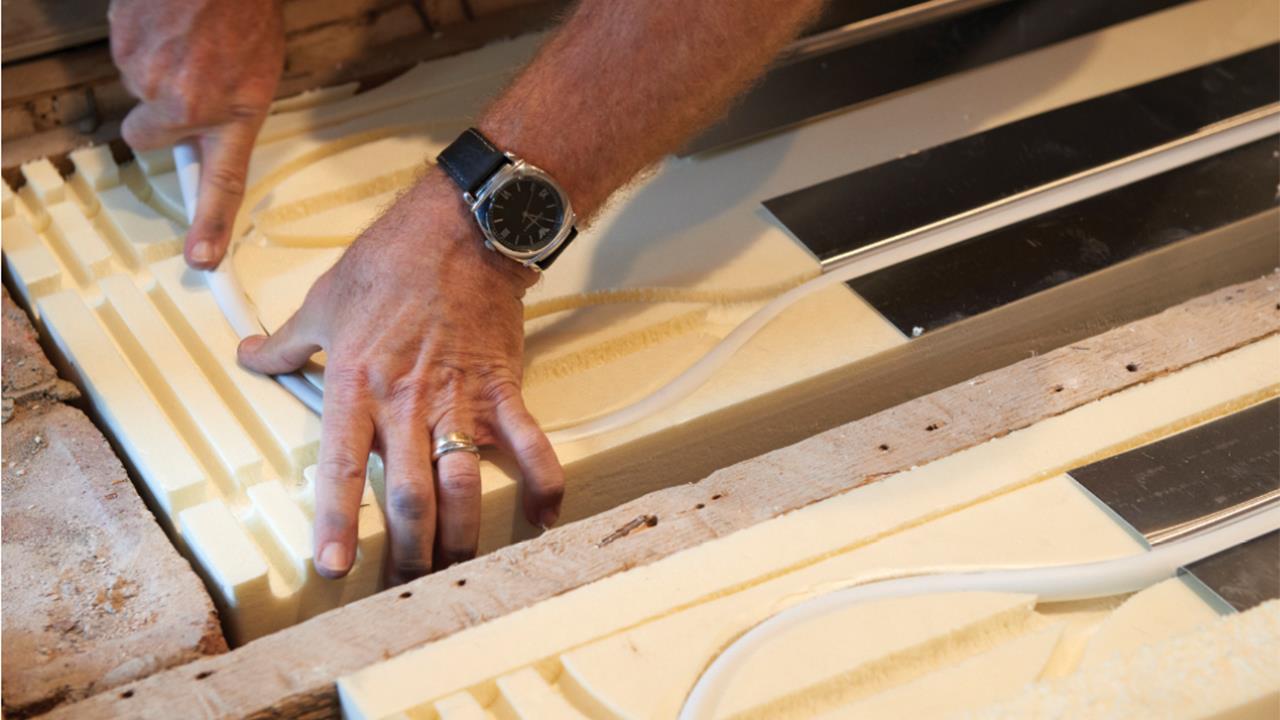

Steve Harris, Technical Services Engineer at Wavin Hep2O, provides an explainer on underfloor heating to ensure you’re prepared for any tricky customer questions that may come your way.
For many homeowners, the new year means a new focus on home improvements. Whether they’re looking to sell in the spring or just add value to their property, underfloor heating is a popular choice. If customers come calling, you need to be able to answer all their questions, so here’s my top advice.
What are the performance benefits of UFH?
Traditional radiators generally need replacing at least twice in a building’s lifetime, so one of the great things about UFH is that it doesn’t require additional maintenance.
This means you can be confident that the system will stay exactly as you leave it. Opting for UFH is an investment in a building’s future – providing a quality, long-lasting solution.
For customers where health is a priority, traditional radiators aren’t always the best choice. UFH uses natural radiation, with pipes beneath the floor transferring heat into a room, meaning it has little impact on air quality when compared with traditional convection heating systems which can circulate bacteria and dust.
Add to this that UFH keeps floor coverings warm and dry and frees up space by getting rid of bulky radiators, it’s a no-brainer for your customers who are looking for style and comfort.
Will UFH take a long time to install?
Just because UFH adds a bit of luxury to someone’s home, doesn’t mean it’s difficult to install or time-consuming and disruptive for your customers. Actually, with the right preparation and advice UFH can be super easy.
Manufacturers, such as Wavin Hep2O, offer support and guidance on UFH installation, including ‘how-to videos’, to make choosing and installing the system as easy as possible. Once the right product has been selected an entire UFH system installation should take no longer than two days, which means less stress on one project and extra time for other jobs.
However, if you’re still unsure, Wavin Hep2O has a few top tips when installing UFH:
Will my energy bills go up with UFH?
Some customers are often surprised to hear that UFH gives much more control to set and regulate the temperature of their systems, giving them more control over their bills.
It’s even been proven that UFH can be 15-20% more energy efficient than traditional heating systems, meaning rooms can be heated to a comfortable level with less energy consumption, which means cheaper energy bills.
Can UFH only go under the floor?
It’s a very common belief that UFH can only be used under flooring, as the name would suggest. It can, however, be installed in any part of a building envelope, such as the walls of a room. This is ideal for your customers who have smaller rooms, such as a small WC. That said, you shouldn’t opt for UFH in the walls alone, as the performance of the system won’t be as effective.
In larger buildings, like a block of apartments, UFH can be effective when installed in the ceilings. The void of the ceiling is easily accessible for installation meaning the heating solution is beneficial for both the room above and below. However, this kind of installation is more commonly found abroad because it works efficiently as a cool system by circulating cold water.
It is important to note that underfloor cooling systems can only work with a limited variety of flooring types such as stone, ceramic, or luxury vinyl tile, so make sure you check the specification of the flooring before opting for this system. Also, temperature must never be cooled below the dew point because of the risk of condensation forming on the surface.
If you'd like to keep up-to-date with the latest developments in the heating and plumbing industry, why not subscribe to our weekly newsletters? Just click the button below and you can ensure all the latest industry news and new product information lands in your inbox every week.